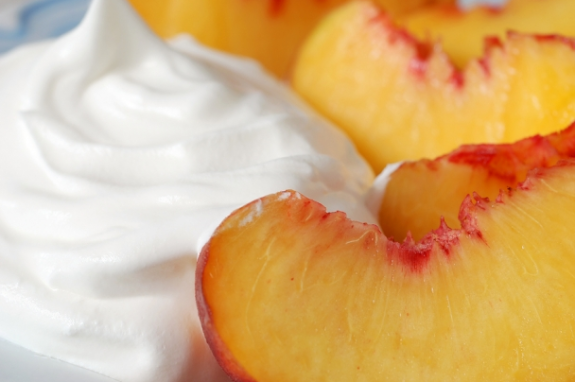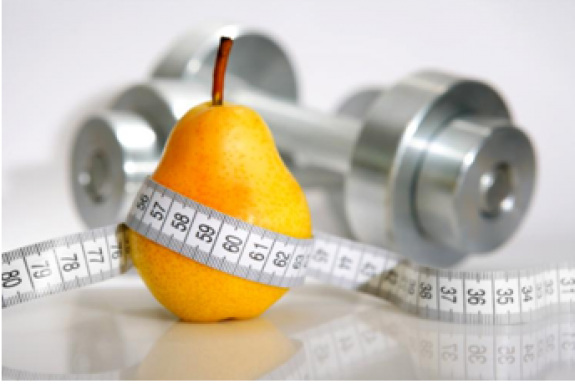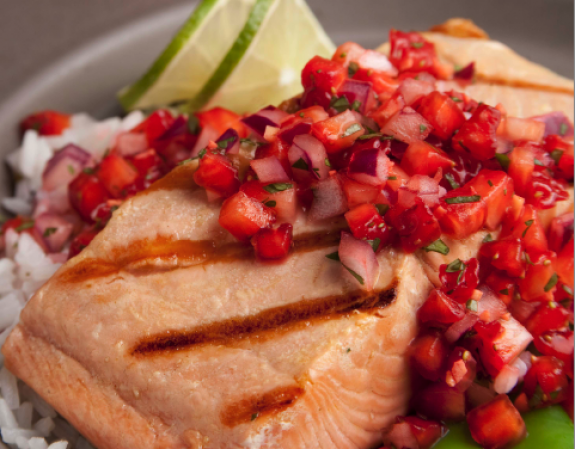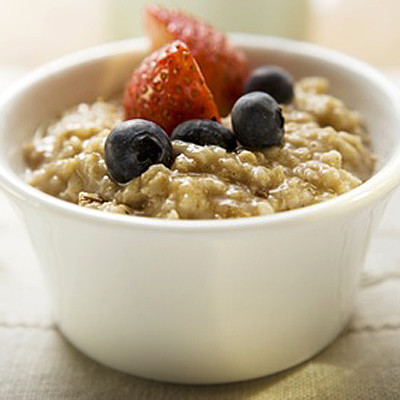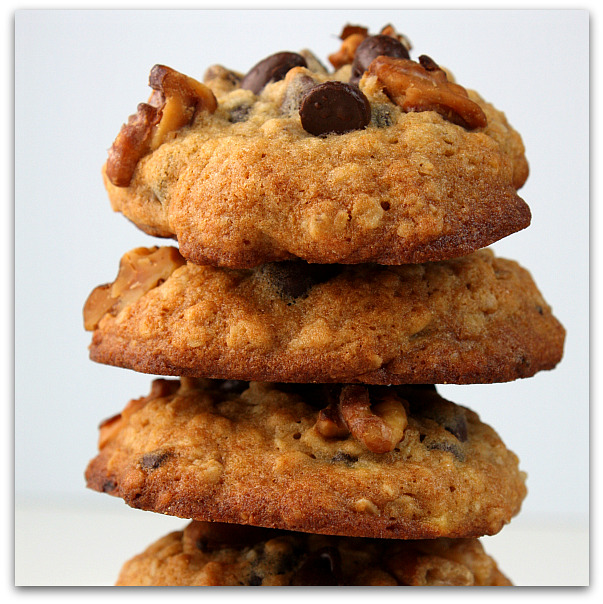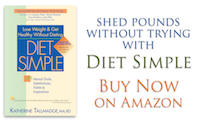A Lethal, Cancer-Causing Bacteria Killed by Yogurt and Kefir
- At August 07, 2016
- By Katherine
- In Articles, News
 0
0
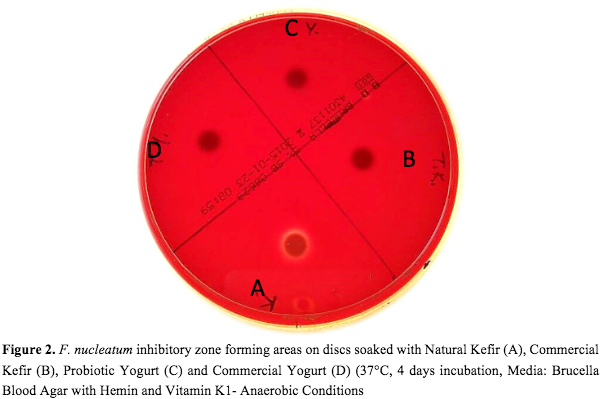
Inhibition of F. nucleatum by natural kefir, probiotic yogurt, commercial yogurt and commercial kefir samples
You’ve all heard about the health benefits of the probiotic bacteria found in yogurt and other similar fermented dairy products such as kefir. This recently published study provides more evidence of yogurt cultures’ actions against serious disease-causing pathogens, such as Fusobacterium nucleatum.
F. nucleatum can cause diseases in the mouth, teeth, brain, pleura, lungs and liver. It induces fetal death in pregnant women and can lead to colon cancer by binding to the lining of the gastrointestinal tract, according to a recent study in the journal, Functional Foods in Health and Disease.
In this study, when yogurt and kefir were added to a petri dish filled with F. nucleatum and incubated for 3 days, there appeared clear zones where the yogurt and kefir were placed. Thus showing inhibition of the growth of F. nucleatum. Interestingly, the plain milk used for the yogurt and kefir did not show an inhibitory effect, but the higher the concentration of the kefir and yogurt probiotic bacteria, the more F. nucleatum’s growth was inhibited.
“Previous studies have indicated that fermented dairy products can cause probiotic effects such as improvement in digestive system health, serum cholesterol reduction, and improvement in lactose tolerance, improved immune function, control of irritable bowel symptoms, as well as anticarcinogenic properties. Kefir is known to have positive effects on health and especially intestinal health. Therefore, these findings are important for showing an inhibition effect of fermented dairy products against a pathogen and possible carcinogen. These results suggest that regular consumption of natural fermented dairy products especially kefirshould be included in a functional diet. The impact of these cultured dairy products could be promising and warrants further investigation with in vivo studies,” according to the authors of the study.
Fresh Kale and Summer Peach Salad with Toasted Almonds and Balsamic Vinaigrette
- At July 31, 2016
- By Katherine
- In News, Recipes
 1
1
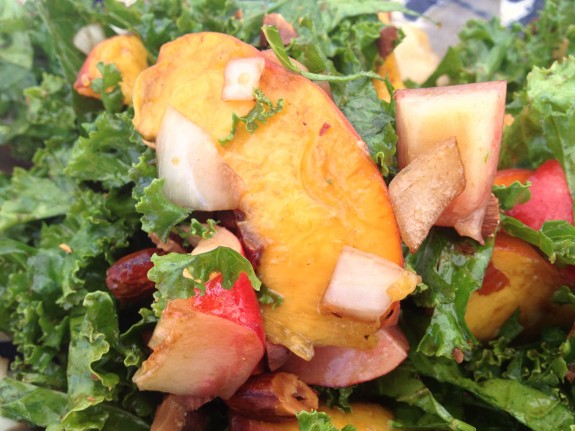 The local peaches at this year’s farmers’ markets are exceptional: sweet, juicy, flavorful. This recipe is a perfect way to feature them at any gathering. And it’s always a favorite! Excerpted from my book: Diet Simple Farm to Table Recipes: 50 New Reasons to Cook in Season!
The local peaches at this year’s farmers’ markets are exceptional: sweet, juicy, flavorful. This recipe is a perfect way to feature them at any gathering. And it’s always a favorite! Excerpted from my book: Diet Simple Farm to Table Recipes: 50 New Reasons to Cook in Season!
Serves 6
Vinaigrette:
3 Tablespoons Extra Virgin Olive Oil
1 Tablespoon Balsamic Vinegar
Salt and Pepper to taste
Salad Ingredients:
6 Handfuls of fresh Kale (or other greens), washed, tough stems removed, and torn into bite-sized pieces
2 Cups Fresh Sliced Summer Peaches and/or any seasonal Berries
2 Ounces toasted slivered Almonds
½ Sweet Onion, peeled and sliced
In a large bowl, add the olive oil, vinegar, salt and pepper. Whisk together. Add the kale, onion, almonds, and peaches and toss together. Serve immediately.
13 Steps to Survive the Summer Heat
- At July 12, 2016
- By Katherine
- In Articles, News
 0
0
I was alarmed the other day when a client texted me that he had lost 5 pounds after running. He is an athletic 200 pound man, but heavy water loss, caused by running in this heat, could have serious consequences. The worst: death by heat stroke.
Before a heat stroke occurs, people show signs of exhaustion, weakness, perhaps headaches and dizziness. My client was so weak, he couldn’t finish his run.
How does your body’s system break down to cause heat stroke?
Normally, water carries heat away from your internal organs. The heat travels through your bloodstream to your skin, causing you to sweat, preventing serious damage to occur. As the sweat evaporates, this allows you to cool off and maintain a safe body temperature, optimal functioning, and health.
But when the fluid in your blood runs out of water, your body’s core literally starts cooking, you stop sweating and organs begin to breakdown.
Daily water intake must be balanced with losses to maintain total body water. Once you start feeling thirsty, you’ve probably lost about 1 percent of your body water and are dehydrated. With a 2 percent water loss, you could experience serious fatigue and cardiovascular impairments. It’s important to note that individual fluid needs differ depending on your sweat rate, the environmental temperature, your clothing, humidity and other factors.
Hydration tips
As summer temperatures hit, here are a number of important tips.
– Drink enough water to prevent thirst.
– Monitor fluid loss by checking the color of your urine. It should be pale yellow and not dark yellow, too smelly or cloudy.
– For short-duration (less than 60 minutes), low-to-moderate-intensity activity, water is a good choice to drink before, during and after exercise.
– Any time you exercise in extreme heat or for more than one hour, supplement water with a sports drink that contains electrolytes and 6 percent to 8 percent carbohydrates. This prevents “hyponatremia” (low blood sodium), which dilutes your blood and could also lead to serious impairment and death.
– Begin exercise well-hydrated. Drink plenty of fluids the day before and within the hour before, during and after your exercise session.
– Avoid alcohol the day before or the day of a long exercise bout, and avoid exercising with a hangover.
– Consider all fluids, including tea, coffee, juices, milk and soups (though excluding alcohol, which is extremely dehydrating). The amount of caffeine in tea and coffee does not discount the fluid in them, even if they have a slight diuretic effect, according to the most recent report by the National Research Council’s Food and Nutrition Board.
– Eat at least five cups of fruits and vegetables per day for optimum health, as they all contain various levels of water and the all-important nutrient potassium.
– During exercise, for those who experience high sodium losses, eat salty foods in a pre-exercise meal or add an appropriate amount of salt to sports drinks consumed during exercise. Orange juice is high in potassium. Dilute juices, such as V-8 or orange juice, 50/50 with water so that the drinks are 6 percent carbohydrate solutions (the same as sports drinks), which will empty from your stomach quicker than 100 percent juice (juices are naturally 12 percent solutions), allowing the electrolytes and water to quickly reach your heart and organs.
– Following strenuous exercise, you need more: Protein to build muscle, carbohydrates to refuel muscle, electrolytes to replenish what’s lost in sweat, and fluids to help rehydrate the body. Low-fat chocolate milk is a perfect, natural replacement that fills those requirements.
– You can also replace fluid and sodium losses with watery foods that contain salt and potassium, such as soup and vegetable juices.
– For long hikes, when you’ll need food, dried fruit and nut mixtures contain high amounts of potassium, sodium, protein, carbs and calories — though continue to drink plenty of water.
– To determine your individualized need for fluid replacement: During heavy exercise, weigh yourself immediately before and after exercise. If you see an immediate loss of weight, you’ve lost valuable water. Drink 3 cups of fluid for every pound lost; use this figure to determine the amount of water (or sports drink) you’ll need to drink before and during your next exercise session to prevent weight/water loss in the future.
Cured Red Meats Increase Risk of Many Cancers
- At July 07, 2016
- By Katherine
- In Articles, News
 0
0
You might want to cut back on the cold cuts, bacon and other processed meats. The World Health Organization is out with a new report that says cured meats and red meat increase the risk of colon and stomach cancer.
A group of 22 scientists from the IARC,The WHO’s International Agency for Research on Cancer in Lyon, France, evaluated more than 800 studies from several continents about meat and cancer. The studies looked at more than a dozen types of cancer in populations with diverse diets over the past 20 years.
Based on that analysis, the IARC classified processed meat as “carcinogenic to humans,” noting links in particular to colon cancer. It said red meat contains some important nutrients, but still labeled it “probably carcinogenic,” with links to colon, prostate and pancreatic cancers.
A Creamy Peach & Ginger Surprise
Fresh, juicy peaches are in season and I have a new peach recipe you’ll love. Surprise: It’s made with Greek Yogurt (though it tastes like cream). Try it and your taste buds will zing! This amazing recipe was developed by the CHOBANI Company’s French-trained chefs, and I got a chance to watch a demonstration with a tasting. This is a lovely dessert containing all the health benefits of yogurt and peaches! Your family and guests will be delighted!
CHOBANI
Peach + Ginger
Yields four, 4 oz servings
INGREDIENTS
2 cups Chobani Non-Fat Plain Greek Yogurt
2 tsp. candied ginger, small dice 4 tbsp. toasted almonds, sliced
2 tsp. fresh thyme, picked
2 tbsp. honey
1 cup Peach and Ginger Compote
PEACH AND GINGER COMPOTE INGREDIENTS
4 yellow peaches, peeled, cored, small dice
1 tbsp. fresh ginger, minced
1 teaspoon lemon juice
1/2 cup sugar
METHOD
- Cook peaches, ginger, lemon juice, and sugar for 20 minutes or until tender. Let cool completely.
- Scoop 1/2 cup of yogurt into each of 4 bowls. Top each bowl of yogurt with 1/4 cup peach
and ginger compote, 1/2 tsp candied ginger, 1 tbsp toasted almonds and drizzle with 1/2 tbsp of honey. Garnish with thyme.110 calories per serving, 0 Fat, 5 mg cholesterol, 35 mg sodium, 17 g carbohydrate, 1 g fiber, 8 grams protein
What is a “Healthy” or “Natural” Food? Katherine Explains on NBC News
- At June 16, 2016
- By Katherine
- In Articles, News
 0
0
What is a “healthy” food? Everyone has their own opinion! “We used to believe sugary cereals were fine, as long as they were fortified with certain vitamins and minerals [according to the Food & Drug Administration’s definition],” I told Tom Costello, NBC Nightly News Correspondent on the NBC Nightly News on May 11.
But that definition was based on 30-year-old standards when “low fat” was the science of the day. And today, “some of the healthiest foods on the planet are high in fat,” I told Costello on The Today Show on May 12.
The FDA sets standards for labels indicating the food’s fat, saturated fat, sodium, cholesterol and nutrient content, and whether or not a food qualifies, and can be labeled as: “Healthy.” Since nutrition is an evolving science, some of those standards have changed, and the FDA is in the process of revising them.
For instance, when a company produces a product, say, a granola or a snack which contains nuts – which we know today are healthy, but high in fat – the word “healthy” cannot be on the label, as the FDA guidelines have not caught up with today’s science that some fats are actually good for you.
But that does not mean that we should trash everything we ever learned about. It is still important to balance our lives with fruits and vegetables, exercise, and keeping our calorie needs in mind. Healthy fats, such as those in nuts, avocadoes, olive oil, salmon, and certain fried foods and dressings, are important, but that isn’t a license to binge, or … to fear and abstain from any foods containing sugar – fruit, 100% fruit juice, sweet vegetables like carrots, milk, and yogurt (even with fruit on the bottom!).
Balance is everything! Eating sugar-free is just as unhealthy as eating fat-free. Avoiding foods containing any hint of sugar, and even natural sugar, I believe, will be the next diet fad you’ll want to avoid!
Katherine’s Diet Tip #3: Eat Salmon to Lose Weight!
- At June 13, 2016
- By Katherine
- In Articles, News
 0
0
Recent studies show that omega-3 fatty acids can reduce body weight gain and chronic inflammation through the improvement of the bacteria in your gastrointestinal tract (the microbiota).
The authors of this new study published in the International Journal of Obesity found feeding your child salmon may prevent obesity later in life, too. But how? The authors theorize the reason is that these increased tissue levels of omega-3 fatty acids [found in abundance in salmon, herring, anchovies and sardines], may prevent antibiotic-induced alteration in gut microbiota in children, and obesity later in life.
“Elevated tissue levels of omega-3 fatty acids significantly reduce body weight gain and the severity of insulin resistance, fatty liver and dyslipidemia [high cholesterol] resulting from early life exposure to ezithromycin [an antibiotic],” said the authors.
These results makes sense to me for at least two reasons:
It’s already been established that babies who are breast fed – and breast milk is loaded with probiotics – are less likely to be overweight later in life. Also, probiotics (for instance, found in yogurt) improve the health of the microbiota. So, apparently, an improvement in the microbiota is one reason why probiotics may help manage weight in children through their lifespan. This study showed that probiotics can help undo the harm to the gastrointestinal tract caused by early antibiotic use. Learn more about probiotics and the microbiota…
Omega-3 fatty acids are known for their anti-inflammatory properties. They have been hailed for decreasing heart disease risk, cancer risk, cognitive decline, Alzheimer’s Disease -and now – increase of healthy gut bacteria and obesity. Learn more about omega-3 fatty acids…
So, eat your salmon – or any fatty fish – to lose weight! The American Heart Association recommends 12 ounces per week.
Katherine’s Diet Tip #2: Download Your Calories!
- At June 06, 2016
- By Katherine
- In Articles, News
 0
0
What’s one of the most effective, enjoyable, and simple changes – for weight loss and health – you can make in your eating? Simple: Add breakfast to your day. Katherine explains to Washingtonian Magazine…
Also, CNN spoke with Katherine about breakfast. Here’s a part of that conversation.
What exactly is it about breakfast that makes it so beneficial? And are all are breakfasts created equal? A study from Pediatrics looked at 2,000 teenagers and found that teens who ate breakfast weighed less, exercised more and ate healthier food than their classmates who didn’t eat breakfast. More studies have confirmed this link with breakfast and adults, too.
CNN: Explain the real benefits of eating breakfast. In your experience, have you seen among your patients the same results this study showed: that people who aren’t eating breakfast actually weigh more? How is that?
Tallmadge: In one study, people who ate more in the beginning [of] the day ate fewer overall. As soon as you start eating, you start raising your metabolism; your whole body is burning calories earlier in the day. Helps control your appetite. People who skip breakfast — victims of vending machines. The pickers — they eat overall more calories, tend to eat more. In another study, people who ate larger breakfasts and lunches, with lighter dinners, were more likely to manage their weight.
CNN: What about for the people who say, “I just don’t have time to eat breakfast”? What are your tips?
Tallmadge: I know we’re all busy, but everyone has to make time to eat breakfast. In Diet Simple I have tons of ways people can fit breakfast into a busy day!
Scientific studies confirm breakfast eaters get more nutrients for the whole day, are more likely to lose and maintain healthy weights, have more energy, concentrate better, and eat fewer overall calories during the day.
I have great ideas for easy and delicious breakfasts in Diet Simple. My favorite breakfast? a warm bowl of oatmeal cooked in milk with fruit and nuts… even a peanut butter sandwich with yogurt and fruit, or eggs on whole grain toast with spicy chicken sausage… Do you like lox on a whole grain bagel? How about whole grain blueberry pecan pancakes? All excellent choices… Bon Appetit!
Katherine’s Diet Tip #1: Minesweep for Calorie Bombs!
- At May 31, 2016
- By Katherine
- In Articles, News
 0
0
Are you ready for summer? I mean, is your body ready … to shed the heavy coats and sweaters, to wear lighter weight, more form-fitting clothes? If not, or if you would just like to learn some good tips, follow me here every Monday with proven strategies to lose weight, improve your health or just increase your knowledge about nutrition. Through early summer, we’ll be losing weight together, so you’ll be ready for the warmer days to come!
Losing weight is not about discipline or will power. It’s about controlling your environment. Period.
We all have different strengths and weaknesses which must be considered when cutting calories or making any other healthful lifestyle changes. Let’s talk about me, Katherine Tallmadge. One of my main weaknesses is chocolate. I can’t stop with one piece. That’s simply not “normal” for me. I’ll occansionally indulge my passion with a small piece of dark chocolate, but I’ve learned never to bring home a full box of chocolate-covered caramels. It will be gone in a day or two, max.
I’m no better with chips. I have no self-control, and I know it. So I’ll occasionally buy a 1-ounce bag. But a big bag? Never!
One of my strengths (finally, something positive!) is that I love fruit. I stock up on cut-up fruit so I always have it at my fingertips.
You have to recognize your own “mines.” I advise everyone to minesweep the kitchen for those calorie bombs that can explode your weight. Have a hard time resisting ice cream? Then get rid of the half gallon. Candy bar pitfall? Toss out the leftovers from the Easter season.
Minesweeping your kitchen periodically to get rid of things you shouldn’t have in the house in the first place will save a tremendous amount of calories over time. Add the things that you like and should be eating, and you’ll do even better! Be good to yourself and make your negative behaviors hard and your good behaviors easy.
If just one candy bar is replaced by an apple every day, you’ll save 175 calories. That adds up to about 18 pounds lost in one year!
* Excerpted from “Diet Simple: 195 Mental Tricks, Substitutions, Habits & Inspirations” (LifeLine Press) by Katherine Tallmadge


